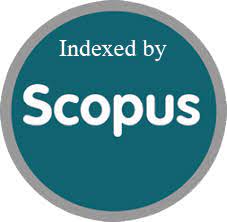A Sustainable Biosphere Through Intelligent Technologies
DOI:
https://doi.org/10.52783/jns.v14.3867Keywords:
Artificial intelligence (AI), Sustainability, Biosphere, Environmental conservation, Ecological monitoring, Sustainable development, Machine learning, Deep learning, Computer vision, Biodiversity conservation, Species identification, Habitat mapping, PredAbstract
This chapter investigates the revolutionary capacity of artificial intelligence (AI) to support a resilient and enduring biosphere. It examines how AI technologies, encompassing machine learning, deep learning, and computer vision, can fundamentally change the way we approach biodiversity protection, ecological observation, and the creation of environmentally friendly bio-based solutions. Key areas of focus include AI-driven identification and monitoring of species, predictive modelling of ecological disruptions, precision agriculture methods for improved resource management, and the development of innovative biomaterials and biofuels through AI-powered drug discovery and bioengineering. Furthermore, the ethical implications and potential difficulties linked to AI-based environmental stewardship are critically analyzed, covering topics such as data security, algorithmic prejudice, and the accountable implementation of autonomous systems. This research aims to deliver a thorough analysis of the opportunities and challenges presented by AI in establishing a more sustainable and robust biosphere for generations to come.
Downloads
Metrics
References
H. Gardner, The Mind’s New Science: A History of the Cognitive Revolution, Basic Books, 1987.
D. Geer Jr., K. S. Hoo, A. Jaquith, “Information security: Why the future belongs to the quants,” IEEE Security & Privacy, 2003.
C. Sutton, A. McCallum, “Piecewise Training for Structured Prediction,” Machine Learning To appear.
Alperovitch, Dmitri. (2011). Revealed: Operation Shady Rat. [White Paper]. Retrieved from: http://www.mcafee.com/us/resources/white- papers/wp-operation-shady-rat.pdf
Department of Defense. (2011). Department of Defense Strategy for Operating in Cyberspace. Retrieved from: http://www.defense.gov/news/d20110714cyber.pdf
McNeese, M., Cooke, N.J., Champion, M.A. (2011) Situating Cyber Situation Awareness. Proceedings of the 10th International Conference on Naturalistic Decision Making.
Zetter, K. (2011b) ‘FBI vs. Core flood Botnet: Round 1 Goes to the Feds,’ Wired, April 26 http://www.wired.com/threatlevel/2011/04/coreflood_results/ (accessed November 27, 2012).
McGraw, G. (2013) ‘” Active Defense” is Irresponsible,’ Digital blog, February 14. http://www.cigital.com/justice-league-blog/2013/02/14/active-defense-is-irresponsible/ (accessed October 8, 2013).
https://www.accenture.com/us-en/services/security/cyber-defense
Downloads
Published
How to Cite
Issue
Section
License

This work is licensed under a Creative Commons Attribution 4.0 International License.
You are free to:
- Share — copy and redistribute the material in any medium or format
- Adapt — remix, transform, and build upon the material for any purpose, even commercially.
Terms:
- Attribution — You must give appropriate credit, provide a link to the license, and indicate if changes were made. You may do so in any reasonable manner, but not in any way that suggests the licensor endorses you or your use.
- No additional restrictions — You may not apply legal terms or technological measures that legally restrict others from doing anything the license permits.










